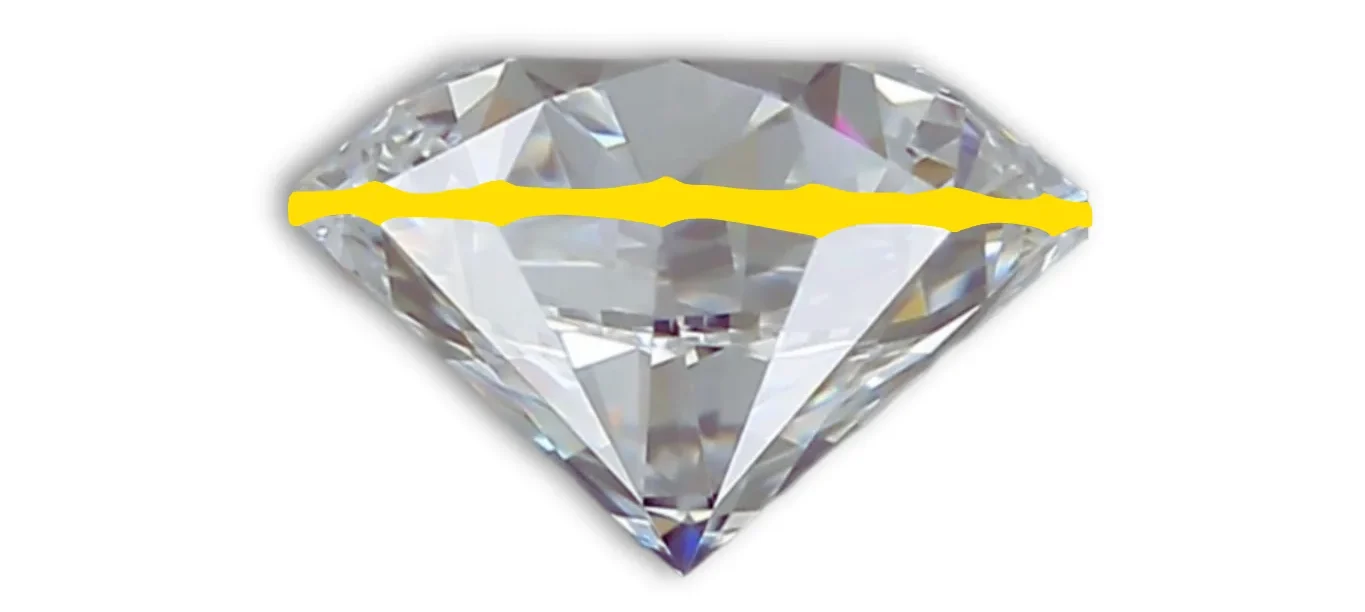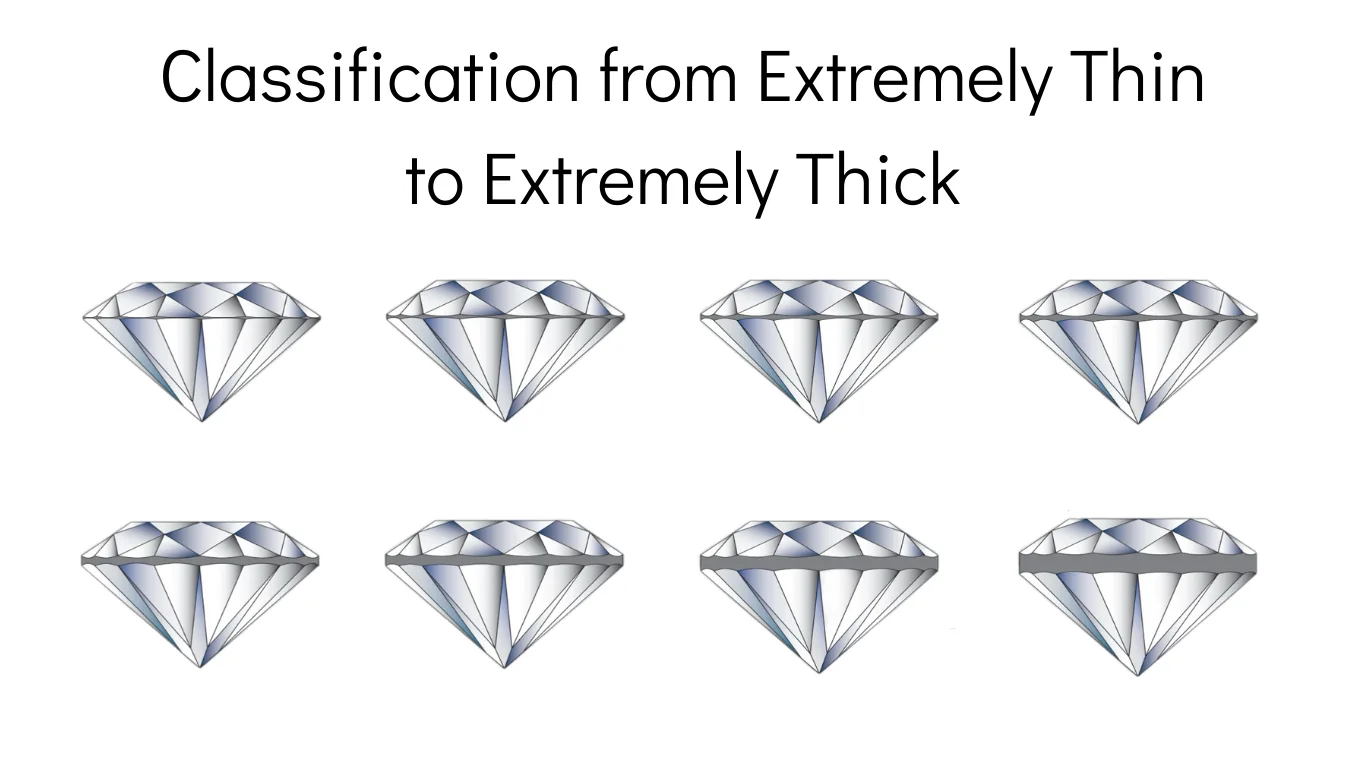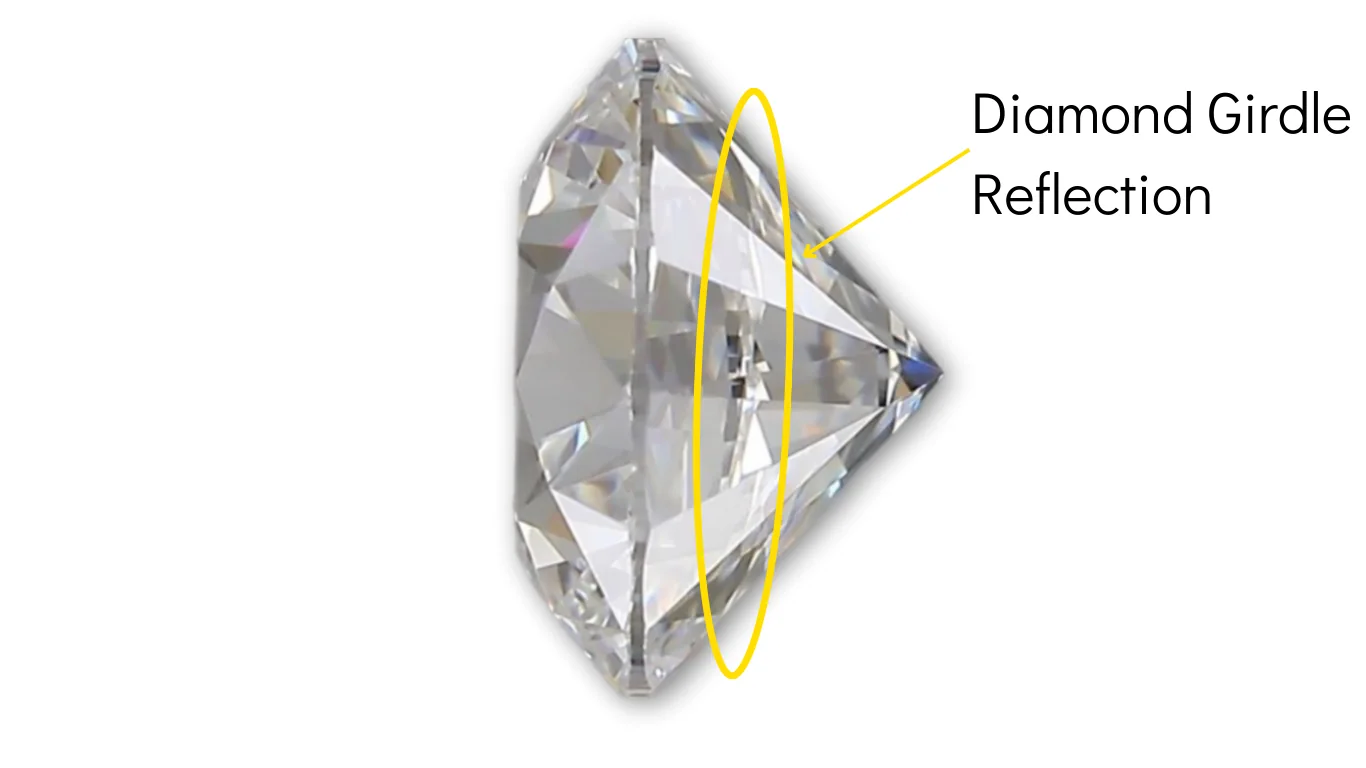Diamond’s girdle might not be the first thing you think of when diamond shopping, but it’s super important. Imagine it as the diamond’s middle, the line that separates the top and bottom halves. This part matters a lot more than you might think, especially when it comes to how your diamond looks and lasts in its setting. So, let’s get into the nitty-gritty of what the girdle is, why its thickness matters, and which one is better for different types of diamond cuts.
What is the Girdle of a Diamond

The girdle of diamond – it’s the edge that goes all the way around the middle of the diamond. This isn’t just any part of the diamond – it’s in the anatomy of the diamond where the top part (that’s the crown) meets the bottom part (called the pavilion). If you were holding a diamond, the girdle is the part you’d see encircling the stone, separating the top and bottom. It’s not just for show, it plays a big role in how the diamond is set into rings, earrings, or any jewelry piece, making sure it stays snug and secure. The girdle can be polished smooth, left a bit rough, or even faceted like the rest of the diamond. This doesn’t just affect how the diamond looks under the microscope or jeweler’s loupe; it influences how the diamond sits in its setting. So, when you hear about the girdle, think of it as the diamond’s belt, holding everything together.
How Thick Should Diamond Girdle be
Aim for a girdle of diamond that’s described as “medium,” “thin to medium,” or “medium to slightly thick.” This sweet spot means the diamond’s less likely to chip (which can happen with a too-thin girdle) and you’re not paying extra for weight you can’t see (like with a too-thick girdle). It’s all about balance, ensuring your diamond looks great and is set securely.
According to GIA classifies diamond girdle thickness like this:
-
- Extremely Thin
-
- Very Thin
-
- Thin
-
- Medium
-
- Slightly Thick
-
- Thick
-
- Very Thick
-
- Extremely Thick

Is Thin Diamond Girdle OK
Sure, a thin diamond girdle can work out fine, but it’s like walking a bit of a tightrope. If you want to wear a ring every day, be sure it’s not too thin. A super thin girdle might mean the edges could chip easier, especially if you accidentally knock it against something hard.
But here’s the thing: if the diamond is set securely and maybe you’re not too rough on your jewelry, a thin girdle is enough. It’s all about finding that sweet spot. For a ring that’s going to see a lot of action, you might want a bit more thick on those edges for peace of mind. For a special occasion piece? A thin girdle could be just fine. The bottom line, think about how and where you’ll wear it and let that guide you.
Diamond Girdle Reflection: Is It Bad

Girdle reflection – is something you might see when looking at your diamond from the side. It’s not a flaw or a crack – it’s just how light bounces off the girdle.
But, if you’re wondering whether it’s a girdle reflection or an actual crack, the best thing to do is take it to a jeweler. They can check it out and tell you for sure.
Round diamonds will pretty much have some level of girdle reflection because of their shape and how they play with light. If your diamond’s girdle is very thick or extremely thick, you might notice the reflection more.
But here’s the thing: a girdle reflection isn’t bad. It’s just a part of how round diamonds are. Most people don’t even notice it. And the right ring setting can help hide it. if the setting is low, it hides more of the diamond’s edges where you see the shiny band around it. So, if you’re worried about how thick your diamond girdle is, and how it reflects the light, low setting is the right decision.
On the other side, rings with high settings show off a lot of the side and won’t hide the girdle reflection. So, when picking out your ring, think about how much of the diamond’s side you’ll see and whether hiding the girdle reflection is important to you.
Girdle and Different Diamond Shapes
Different shapes of diamonds have their own specific features in setting and girdle thickness. Some diamond shapes may have a thicker or thinner girdle, which will not affect their quality. Let’s look at the most popular diamond shapes and the ideal girdle thickness for each type. Also, find out more about different shapes of diamonds.
Round Cut Diamond Girdle
For the classic round cut, the girdle is all about balance. You don’t want it too thick or too thin. A nicely balanced girdle helps make sure the diamond sparkles just right, without adding unnecessary weight or risking damage.
The excellent girdle for the round diamond is from thin to slightly thick.
Best Girdle for Princess Cut Diamond
Princess cut diamonds have sharp corners, so the girdle is super important here. A slightly thicker girdle at the corners can protect those points from chipping. But you don’t want it too thick all around because that would make the diamond look smaller.
We recommend choosing from very thin to slightly thick.
Emerald Cut Diamond Girdle
This shape has step cuts, which create broad, flat surfaces. The girdle here doesn’t need to be too thick, but having it be consistent and not too thin helps protect the edges from chipping, especially since these cuts don’t hide flaws as well as others.
The perfect girdle is very thin – slightly thick.
Oval, Pear, and Marquise Cuts Girdle
These shapes are all about the curves and points. Like with princess cuts, those points on pear and marquise diamonds can be a bit delicate. A girdle that’s a bit thicker at the tips can act like a little shield, protecting the points from knocks and chips.
So, for oval, pear, and marquise cuts the best girdle thickness if from very thin to slightly thick.
The girdle of a diamond is pretty much its middle line, like a belt that separates the top and bottom halves. It’s not just there for decoration – it helps keep the diamond secure in whatever piece of bling. Aim for a girdle that’s not too thin and not too thick is your best choice. This keeps your gem looking good without the risk of chipping or paying for extra weight you can’t even see.

